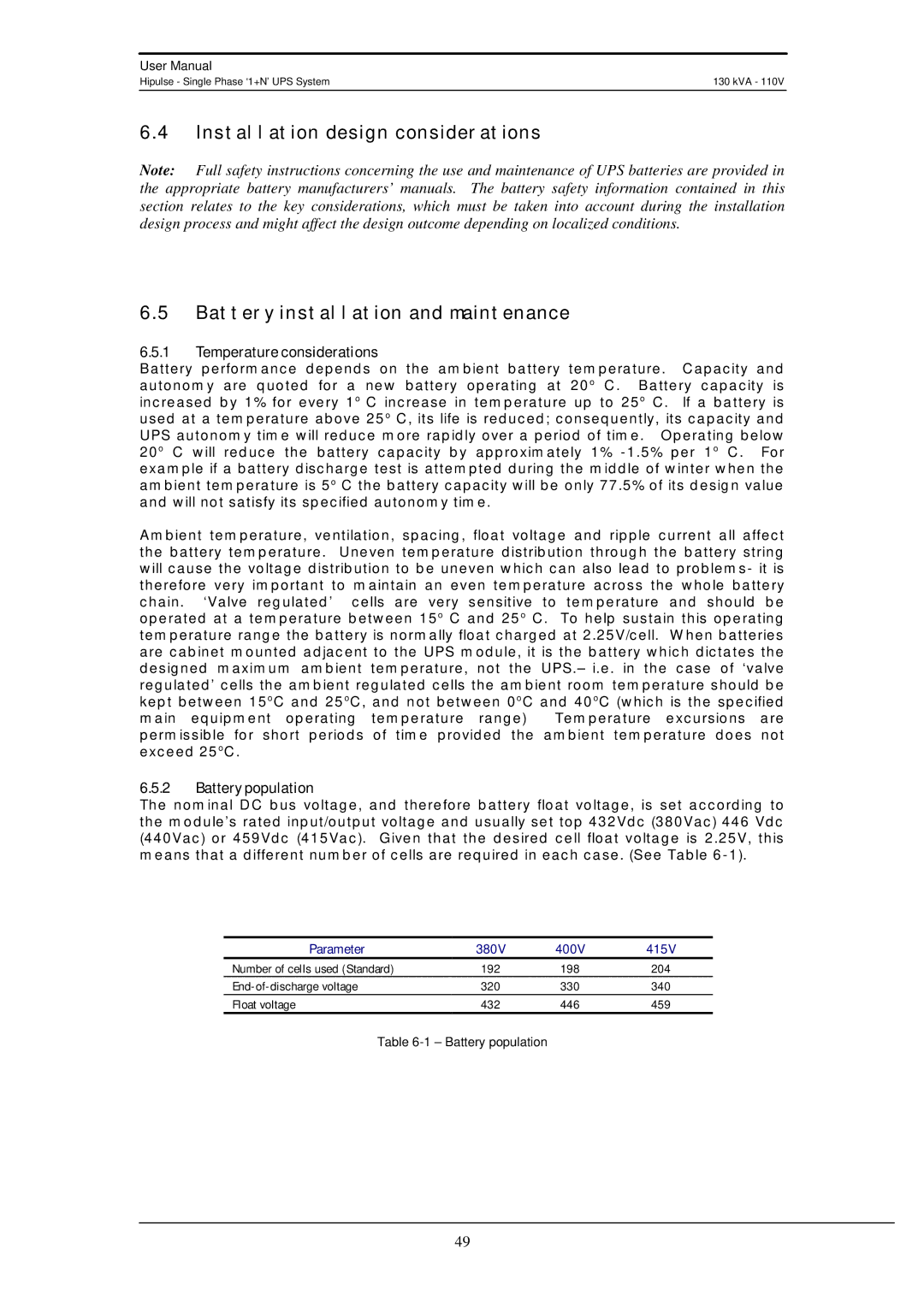
User Manual
Hipulse - Single Phase ‘1+N’ UPS System | 130 kVA - 110V |
6.4Installation design considerations
Note: Full safety instructions concerning the use and maintenance of UPS batteries are provided in the appropriate battery manufacturers’ manuals. The battery safety information contained in this section relates to the key considerations, which must be taken into account during the installation design process and might affect the design outcome depending on localized conditions.
6.5Battery installation and maintenance
6.5.1Temperature considerations
Battery performance depends on the ambient battery temperature. Capacity and autonomy are quoted for a new battery operating at 20o C. Battery capacity is increased by 1% for every 1o C increase in temperature up to 25o C. If a battery is used at a temperature above 25o C, its life is reduced; consequently, its capacity and UPS autonomy time will reduce more rapidly over a period of time. Operating below 20o C will reduce the battery capacity by approximately 1%
Ambient temperature, ventilation, spacing, float voltage and ripple current all affect the battery temperature. Uneven temperature distribution through the battery string will cause the voltage distribution to be uneven which can also lead to problems- it is therefore very important to maintain an even temperature across the whole battery chain. ‘Valve regulated’ cells are very sensitive to temperature and should be operated at a temperature between 15o C and 25o C. To help sustain this operating temperature range the battery is normally float charged at 2.25V/cell. When batteries are cabinet mounted adjacent to the UPS module, it is the battery which dictates the designed maximum ambient temperature, not the UPS.– i.e. in the case of ‘valve regulated’ cells the ambient regulated cells the ambient room temperature should be kept between 15oC and 25oC, and not between 0oC and 40oC (which is the specified main equipment operating temperature range) Temperature excursions are permissible for short periods of time provided the ambient temperature does not exceed 25oC.
6.5.2Battery population
The nominal DC bus voltage, and therefore battery float voltage, is set according to the module’s rated input/output voltage and usually set top 432Vdc (380Vac) 446 Vdc (440Vac) or 459Vdc (415Vac). Given that the desired cell float voltage is 2.25V, this means that a different number of cells are required in each case. (See Table
Parameter | 380V | 400V | 415V |
Number of cells used (Standard) | 192 | 198 | 204 |
320 | 330 | 340 | |
Float voltage | 432 | 446 | 459 |
Table
49
